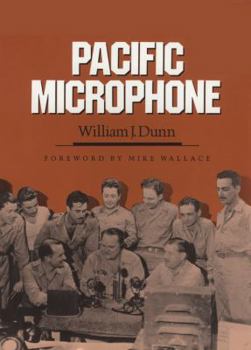Pacific Microphone (Williams-Ford Texas A&M University Military History Series)
(Book #8 in the Texas A & M University Military History Series Series)
Select Format
Select Condition 
Book Overview
In the famous sculpture of Gen. Douglas MacArthur's triumphant return to the Philippines in 1944, one man follows the general onto the beach wearing neither helmet nor hat. That man is a radio... This description may be from another edition of this product.
Format:Hardcover
Language:English
ISBN:0890963398
ISBN13:9780890963395
Release Date:November 1988
Publisher:Texas A&M University Press
Length:416 Pages
Weight:1.90 lbs.
Dimensions:1.5" x 6.4" x 9.3"
Customer Reviews
1 rating
Pacific Microphone
Published by Thriftbooks.com User , 16 years ago
I've read dozens of WWII books in the past 15 years and Dunn's "Pacific Microphone" is truly authentic and keeps you wanting to read more. This is not "glorified" made up stuff to sell books. If you were born in the 1950's or before you can remember "oversea broadcasts via shortwave". These were days way before "broadcast via satellite" which we are now "spoiled" by. During the 40's , 50's and part of the 60's, if you heard a radio report (television could not provide overseas video until the mid to late 60's)from overseas it was via shortwave. You could always tell it was an overseas broadcast because of the fading in and out of the announcer due to the shifting and unpredictable transmissions when using "shortwave" (anywhere from 7.2 to 25mhz in the radio spectrum). It sounded alot like listening to rock n' roll on AM radio back in the early 70's on WLS or KOMA or KAAY from many states away. The words (or music) sound great for 60 to 120 seconds then "take a dip" and almost disappear to where you couldn't hear a thing during these transmissions. This is how Wm Dunn of Pacific Microphone had to relay his "live" broadcasts (there was very little recording technology at that time so most things were "real time") for the CBS radio network. Shortwave transmission stations at that time were far and few, so the guy took notes, made quotes from the scene , and waited until he could get to a broadcast studio with "shortwave tranmitting capabilities" before he could get his "bread and butter" report back to the states. This guy was literally just minutes ahead of the Japanese when they made their strike thru Burma, the East Indies, and northern Australia in late 1941 and early 1942. To be able to get off of the island of Sumatra was something close to a "miracle". Everyone should read this book to get a true feel of the days back in the 40's when Americans were "scared to death" of possible invasion by the Japanese, especially on the west coast. Radio was the only "real time" source for news and millons of Americans depended on AM radio. Kevin W. Cox, R.Ph. Amateur Radio Operator: WBØOSP Rogersville, MO 65742






